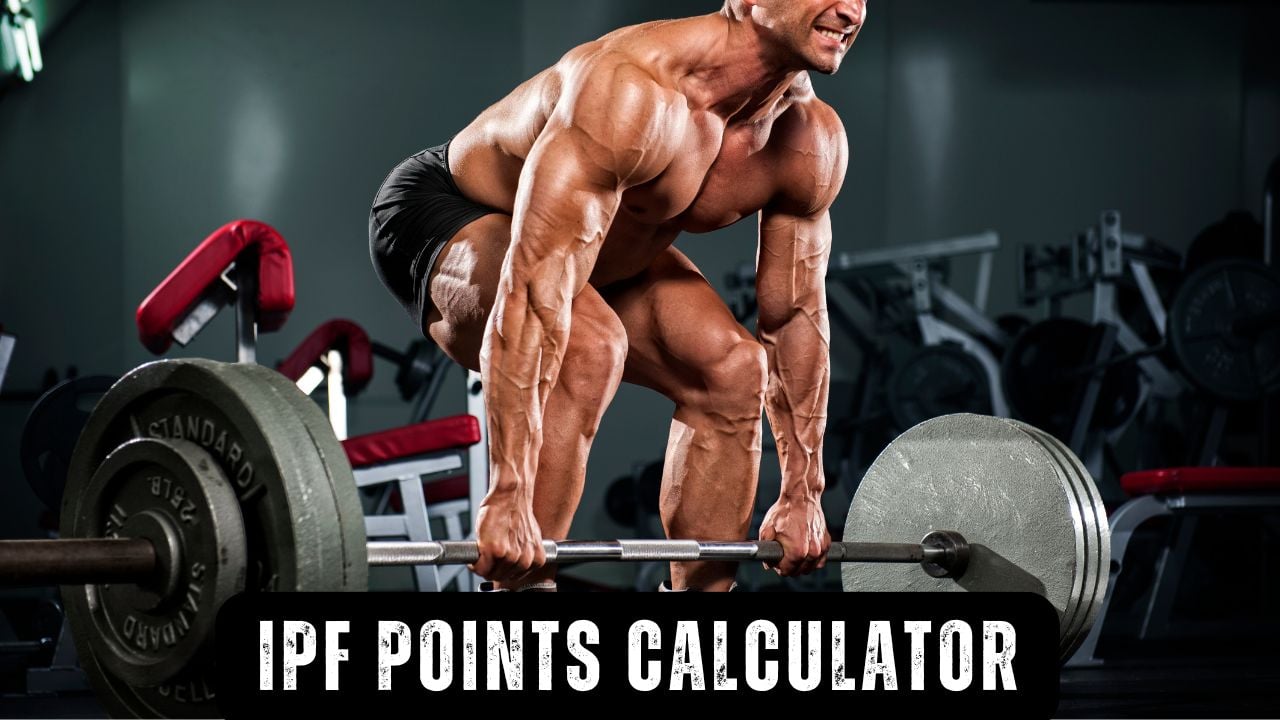IPF GL Points Calculator
Calculate your official IPF GL Points, Wilks Score, and Age-Adjusted scores for powerlifting competitions using the latest IPF formula adopted in 2019.

What are IPF GL Points?
IPF GL (Goodlift) Points represent the gold standard for comparing powerlifting performances across different athletes. Introduced by the International Powerlifting Federation in May 2020, this revolutionary scoring system replaced the outdated Wilks formula to provide more accurate, fair comparisons of powerlifting performances across different weight classes, genders, and competition types.
🏆 Why IPF GL Points Matter
Unlike raw totals that favor heavier lifters, IPF GL Points normalize performance to show your strength relative to elite athletes of your same characteristics. A score of 100 represents elite-level performance, making it the perfect benchmark for competitive powerlifters worldwide.
📊 IPF GL Points Performance Standards
🔬 Scientific Foundation & Research
The IPF GL formula represents years of statistical analysis and research in powerlifting performance. The system is built on solid scientific foundations, incorporating data from thousands of competitive lifters worldwide.
Key Research Papers:
- IPF Formula Evaluation Study – Official IPF research validating formula accuracy and reliability
- Powerlifting Performance Analysis – Comprehensive study on powerlifting performance metrics
- Strength Performance Relationships – Research on strength ratios across different weight classes
- Body Mass Effects on Powerlifting Performance – Study on bodyweight’s impact on lifting performance
- Age-Related Performance Changes – Research supporting McCulloch age adjustments
⚡ How IPF GL Points Work
The IPF GL formula uses sophisticated mathematical modeling to create fair comparisons. Unlike simple ratio-based systems, it employs exponential curves that better represent the relationship between bodyweight and lifting potential.
🧮 Official IPF GL Formula
Where A, B, and C are gender and competition-type specific coefficients derived from statistical analysis of elite powerlifting performance data.
🎯 Current IPF GL Coefficients (2020-2024)
Male Coefficients
Female Coefficients
🎂 McCulloch Age Adjustment System
The McCulloch age adjustment recognizes that strength varies naturally with age. This system multiplies your IPF GL Points by an age-specific factor to create fair competition across age groups.
Age Adjustment Ranges:
- 14-23 years: 1.23 to 1.00 (Youth developing strength)
- 24-39 years: 1.00 (Peak strength years – no adjustment)
- 40+ years: 1.01 to 2.60+ (Masters adjustment for age-related decline)
✅ Benefits of IPF GL Points vs Other Systems
🎯 Accuracy
More precise than Wilks, using current competition data
⚖️ Fairness
Separate coefficients for different competition types
🏅 Official Recognition
Used in all IPF competitions worldwide
📈 Modern Data
Based on contemporary powerlifting performance
🌍 Universal Standard
Consistent comparison across all weight classes
🔄 Regular Updates
Coefficients updated as sport evolves
📈 How to Improve Your IPF GL Points
🏋️ Training Focus
- Prioritize total over individual lift PRs
- Address weak points systematically
- Use periodization for peak performance
- Practice competition commands and timing
🎯 Technical Mastery
- Perfect your competition technique
- Work with experienced coaches
- Video analysis for form optimization
- Practice under competition conditions
💪 Physical Preparation
- Optimize bodyweight for your class
- Focus on recovery and nutrition
- Build competition-specific strength
- Develop mental toughness
🌟 IPF GL Points in Competition
IPF GL Points are now the official scoring system for:
- All IPF World Championships
- Regional IPF competitions
- National powerlifting federations
- University and collegiate competitions
- Masters and junior competitions
Note: While developed for IPF competitions, IPF GL Points can be used to evaluate performance in any powerlifting meet, regardless of federation, providing a standardized comparison metric.
Frequently Asked Questions
IPF GL Points performance levels:
- 600+: World Record Level
- 500-599: Elite International
- 400-499: Elite National
- 300-399: Advanced Competitive
- 200-299: Intermediate
- 100-199: Novice
- Below 100: Beginner
IPF GL Points are more accurate than Wilks because they use more recent data and separate coefficients for different competition types. The formula was developed using statistical analysis of modern powerlifting performance data, making it more representative of current competitive standards.
The McCulloch formula adjusts scores based on age to account for natural strength variations. Younger athletes (14-23) receive higher multipliers as they’re still developing, while masters athletes (40+) receive adjustments to compensate for age-related strength decline.
Yes! While IPF GL Points are official for IPF competitions, you can use this calculator to assess your performance in any powerlifting meet. It provides a standardized way to compare performances regardless of the competition federation.
Equipped powerlifting allows the use of supportive gear that can significantly increase lifting capacity. The IPF GL formula uses separate coefficients for equipped and raw competition to ensure fair comparison within each category while maintaining the integrity of the scoring system.
Related
- Barbell Racking Calculator
- Push-Up Weight Calculator
- Wilks Calculator
- DOTS Calculator
- One-Rep (1RM) Max Calculator
- One-Rep Max (1RM) Bench Press Calculator
References
- Keogh JW, Hume PA, Pearson SN, Mellow PJ. Can absolute and proportional anthropometric characteristics distinguish stronger and weaker powerlifters? J Strength Cond Res. 2009 Nov;23(8):2256-65. doi: 10.1519/JSC.0b013e3181b8d67a. PMID: 19826300.
- Vanderburgh PM, Batterham AM. Validation of the Wilks powerlifting formula. Med Sci Sports Exerc. 1999 Dec;31(12):1869-75. doi: 10.1097/00005768-199912000-00027. PMID: 10613442.
- Ferland PM, Allard MO, Comtois AS. Efficiency of the Wilks and IPF Formulas at Comparing Maximal Strength Regardless of Bodyweight through Analysis of the Open Powerlifting Database. Int J Exerc Sci. 2020 Sep 1;13(4):567-582. doi: 10.70252/XGHM8852. PMID: 33042369; PMCID: PMC7523908.
- Coker, Nicholas & Varanoske, Alyssa & Baker, Kayla & Hahs-Vaughn, Debbie & Wells, Adam. (2018). Predictors of competitive success of national-level powerlifters: a multilevel analysis. International Journal of Performance Analysis in Sport. 18. 1-10. 10.1080/24748668.2018.1519751.

Manish is a NASM-certified fitness and nutrition coach with over 10 years of experience in weight lifting and fat loss fitness coaching. He specializes in gym-based training and has a lot of knowledge about exercise, lifting technique, biomechanics, and more.
Through “Fit Life Regime,” he generously shares the insights he’s gained over a decade in the field. His goal is to equip others with the knowledge to start their own fitness journey.
